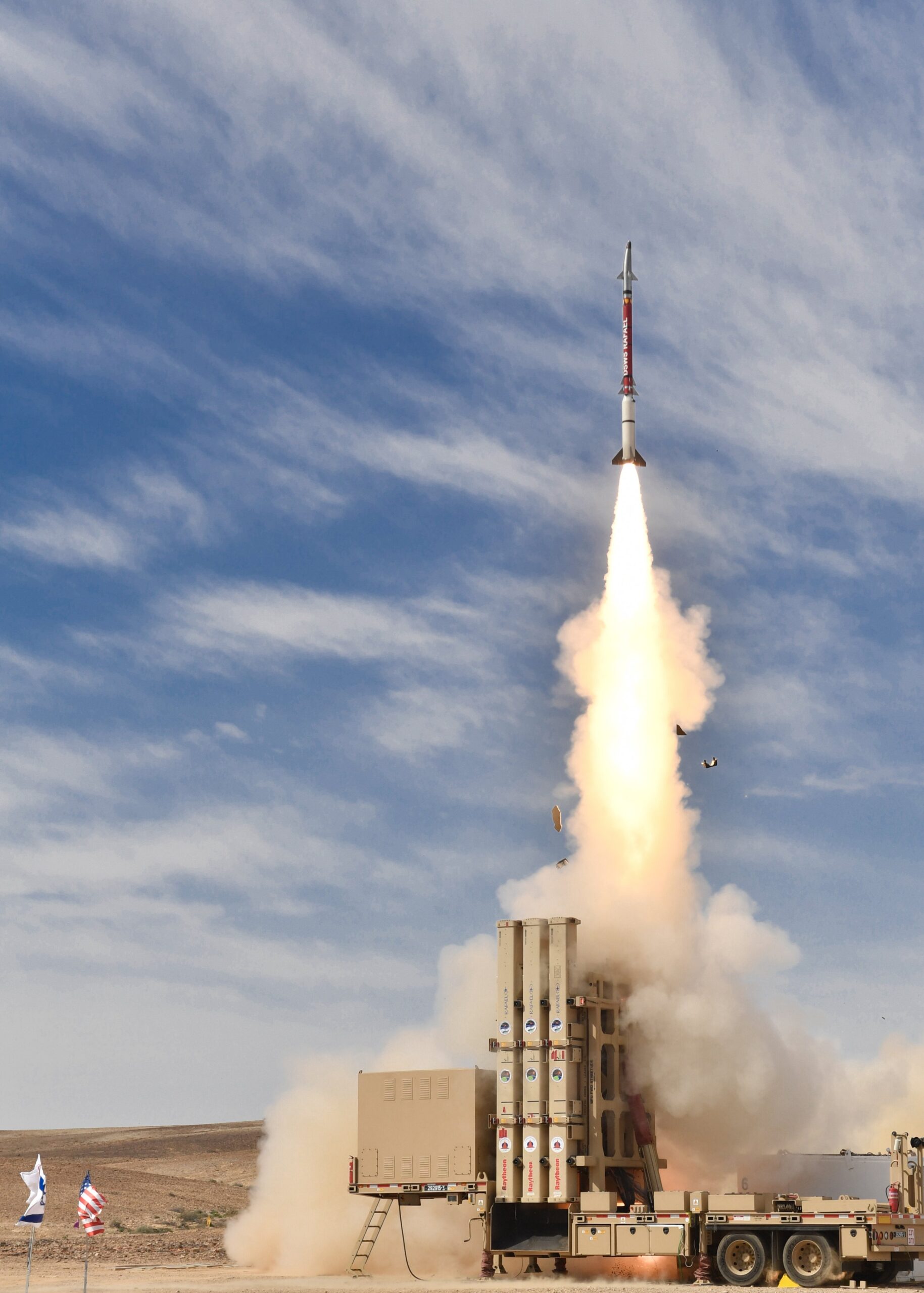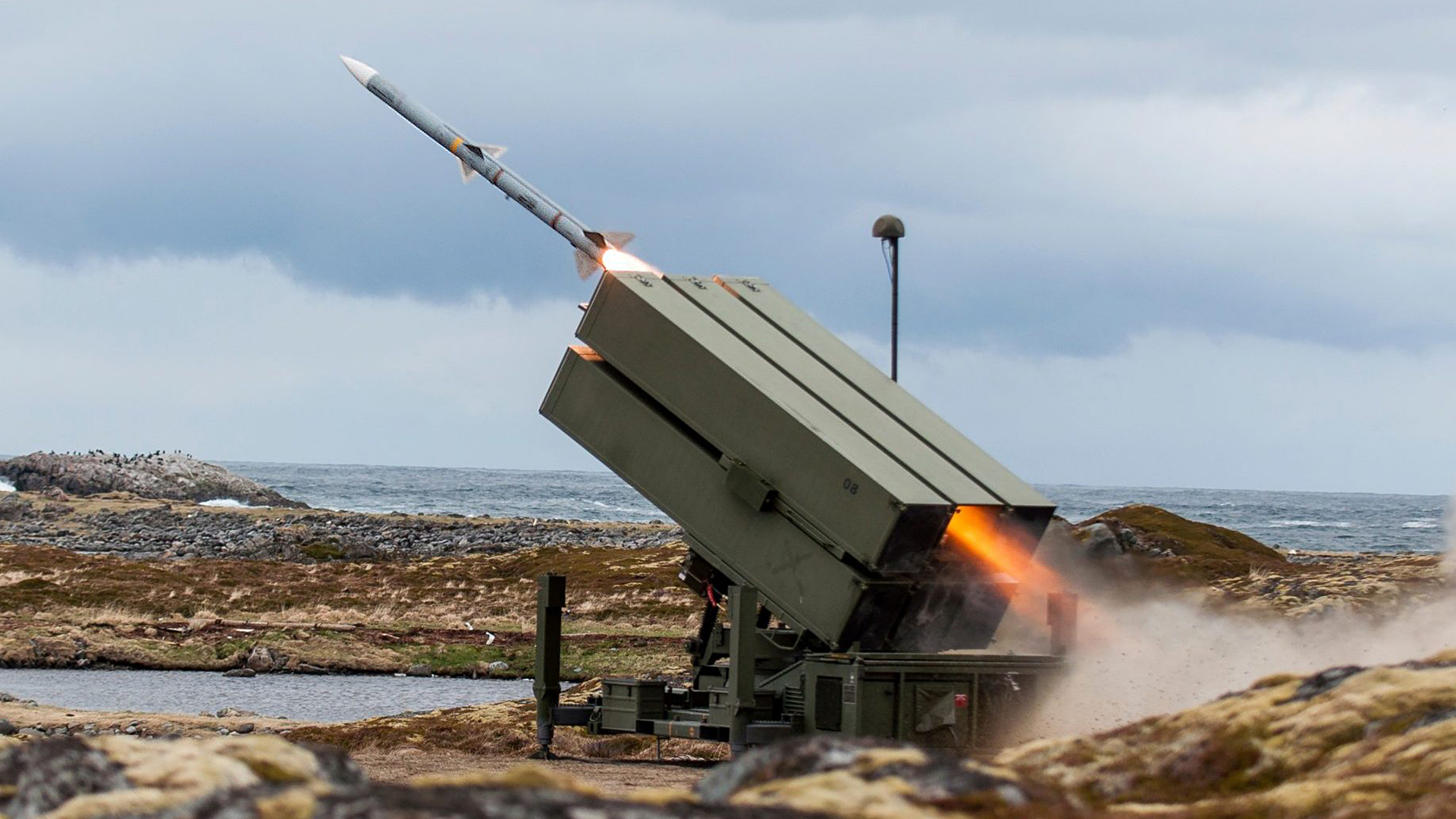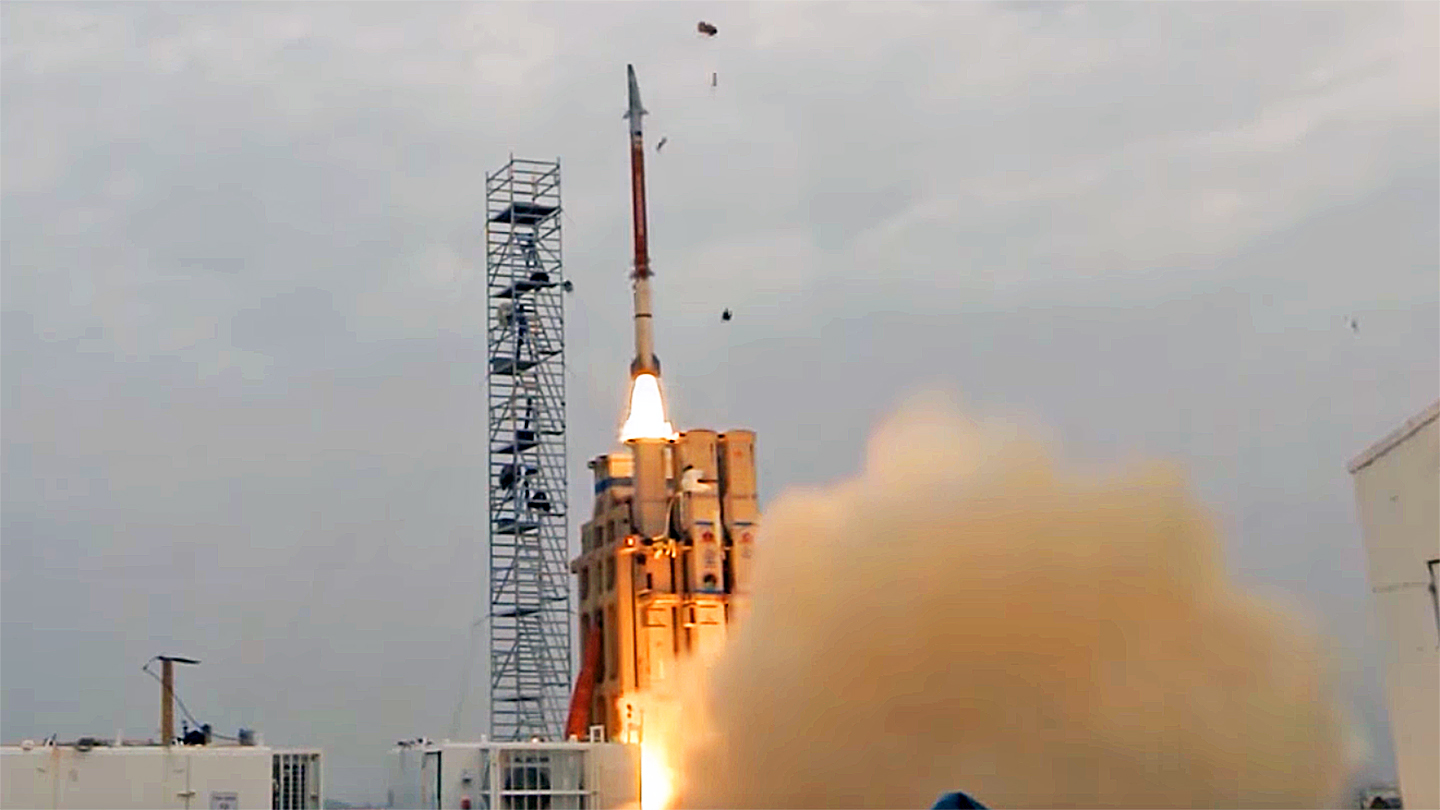NATO’s newest member, Finland, announced Wednesday it will procure the David’s Sling medium-range air defense system from Israel. This is the first export customer for the system.
The system, which fires the unique “dolphin”-nosed Stunner interceptor, is a joint venture between Israel’s Rafael Advanced Defense Systems and Raytheon.
The acquisition, valued at $345 million, not including value-added tax with options adding up to an additional $236 million, “will create a new capability for the Finnish Defense Forces to intercept targets at high altitude,” Finnish Defense Minister Antti Kaikkonen said in a statement. “At the same time we are continuing the ambitious and long-term development of Finland’s defense capability in a new security environment.”

Kaikkonen’s comment about the new security environment is a likely reference to Russia’s ongoing full-on invasion of Ukraine and his nation’s new role as the 31st member of the NATO alliance, which became official yesterday.
One of the biggest takeaways from the conflict is Ukraine’s inability to defend against Russian missiles like the Soviet-era Kh-22 supersonic cruise missiles as well as a very limited defense against short-range ballistic missiles, namely the Iskander-M.
“I emphasize that it is impossible to shoot down Kh-22 missiles with the means we have in our arsenal,” Col. Yuri Ignat, spokesman for Ukraine’s Air Force, said in January after one of those missiles hit an apartment building in Dnipro, killing 40.

The Stunner interceptor, which became operational in 2017, can be used to shoot down short-range ballistic missiles, aircraft, drones, cruise missiles and large artillery rockets.
It is the mid-to-long-range part of Israel’s layered air defense system, slotting in between the Iron Dome anti-rocket and artillery system and the Arrow ballistic missile defense system, with the Patriot system sitting somewhere in between.
Each launcher can carry up to 12 interceptors, which are launched in a vertical orientation.

The Stunner’s canted “dolphin” nose houses imaging infrared and active radar seekers. This dual-mode seeker system makes it harder to jam or decoy and is more reliable in intercepting an array of targets from short-range ballistic missiles and stealth cruise missiles. A data-link also provides targeting data from third party sensors, primarily the system’s Elta ELM-2084 3D AESA radar array, and acts as a quasi ‘third mode.’

Its advanced propulsion system — which features two stages, a booster-like first stage and the interceptor second stage — offers very high energy and maneuverability for the hit-to-kill system, which does not contain a traditional explosives-laden warhead, but instead relies on the kinetic energy of the interceptor slamming into the target. That makes the Stunner smaller, lighter, faster, farther reaching, and more maneuverable than interceptors containing high explosives. The missile onboard seeker and control logic can be programmed to hit specific vulnerable areas of known targets. Its range is said to be between 150 to nearly 200 miles, but typical engagements are likely to occur at significantly smaller distances than that.
You can read more about Stunner and David’s Sling in our past articles on the system here and here.

All these attributes make it a good addition to Finland’s current layered air and missile defense system that does not feature an upper-tier capability like David’s Sling.
Finland’s current air defense ecosystem includes the National Advanced Surface-to-Air Missile System (NASAMS), the advanced Short Range Air Defence System (ASRAD-R), RBS 70 Man-Portable Air Defense System (MANPADS) as well as Finnish Air Force F/A-18 Hornet multi-role fighters. NASAMS primarily uses the AIM-120 AMRAAM as an interceptor, which has a ground-launched range far less than that of Stunner and is not optimized to defeat ballistic missiles or other very high-speed projectiles.
“The David’s Sling system will extend the operational range of Finland’s ground-based air defence capabilities significantly,” Kaikkonen said. “The minimum flight altitude requirement of the system was set at 15,000 meters (nearly 50,000 feet) in the request for quotation.”
David’s Sling “provides a layer of capability similar to Patriot PAC-3 (mod range),” David Shank, a retired Army colonel and former commandant of the Army Air Defense Artillery School at Ft. Sill, Oklahoma, told The War Zone Wednesday afternoon.
“It has greater capability against short-range ballistic missiles and medium-range ballistic missiles than NASAMS, and like Patriot can defeat cruise missiles. NASAMS is a cruise missile killer.”

It’s unclear at the moment how many systems will be delivered and when, or when they will become operational.
The deal also requires a sales release by the United States government, which may not be a slam dunk. In 2019, Breaking Defense reported that the United States “apparently pressured Israel to keep its David’s Sling anti-missile system out of a Swiss competition for an anti-missile system in favor of Raytheon’s Patriot system.” Of course, things have changed a lot in just four years.
We’ve reached out to the Finnish and Israeli MoDs, Rafael and Raytheon for answers and will update this story with any details provided.
When David’s Sling does become operational in Finland, it will add another layer of air and missile defense to a NATO member that shares a 750-mile border with Russia.
And while the purchase has been in the works for several years – there was a down-select in 2020 that narrowed the field to Rafael and Israel Aerospace Industry’s Barak MX – the announcement comes just weeks after Finland joined Denmark, Norway and Sweden to create a unified Nordic air defense alliance. The pooling of the resources of their air forces – which include upwards of 300 combat aircraft – was also formed with an eye toward Russia.
Without a doubt, David’s Sling being deployed along Russia’s border is a major step up in air defense capability and surveillance. Above all else, it shows just how serious Finland is when it comes to countering the potential threat to their east.
Contact the author: howard@thewarzone.com
